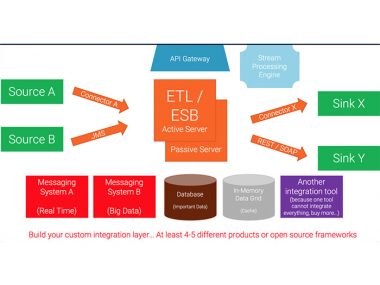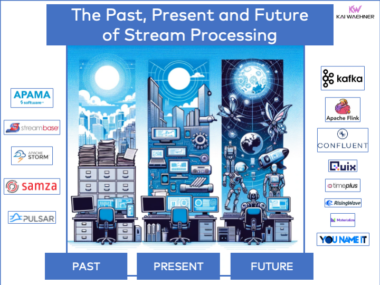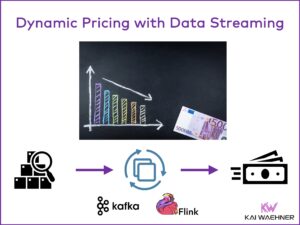SOA / Cloud Symposium 2010 in Berlin
I was at the SOA / Cloud Symposium (5th and 6th October 2010) in Berlin, Germany. As the name already states: The two main topics were SOA and Cloud. This IT conference is the most important vendor-independant confernce regarding these topics. Business drivers for SOA, concepts, design patterns, use case studies and best pracitices were presented by well known, world wide SOA experts.
The Sessions…
SOA experts such as Thomas Erl, Anne Thomas Mannes or Nicolai Josuttis hold some keynotes and further sessions. About 300 people participated. It was not easy to choose sessions, because nine parallel tracks were available. Thus, the thin conference booklet was not really thin 🙂 About 130 sessions (including keynotes and panels) were available.
One particular Session: Connection Points between SOA and Cloud by Thomas Erl
Too many sessions to summarize it all. But one session, which I really liked a lot, was „Connection Points between SOA and Cloud“ by Thomas Erl:
A Cloud may be introduced with or without SOA. Sure… But what advantages can you earn, if you combine both?
To explain this, Thomas Erl explained the goals / advantages of SOA and how the Cloud can help supporting and improving them.
[The arrow „<–“ in the following means: „how can the left part (SOA benefits, SOA characteristics) be improved by the right part (CLOUD)“.]SOA BENEFITS
increase ROI <– IMPROVED BY CLOUD THROUGH reduce costs, only proportional costs
agility / flexibility <– IMPROVED BY CLOUD THROUGH reduced costs, only proportional costs, , easy to add new resources, elasticity, on-demand scaling
reduced IT burden (reduce redundancy, size, operational costs) <– IMPROVED BY CLOUD THROUGH increased availablity and reliability, reduce costs, scalability
SOA CHARACTERISTICS
business driven (dynamic, quick synch between business and IT) <– IMPROVED BY CLOUD THROUGH on-demand usage, multi tenancy, elasticity
enterprise centric (reusable, measurable services) <– IMPROVED BY CLOUD THROUGH on-demand usage, elasticity, multi tenancy, measured usage at cloud
composition-centric (changes of use cases are possible without efforts) <– IMPROVED BY CLOUD THROUGH elasticity and multi tenancy, resiliant computing (increases reliability and availability)
vendor-neutral <– IMPROVED BY CLOUD THROUGH NOT YET RESOLVED – industry standards are necessary!
SOA PRINCIPLES
Most SOA principles are a requirement for a successful cloud, too! Especially: Loose Coupling, Service Abstraction (i.e. a contract only contains information that is published), Reusability, Stateless Services.
Difficult to realize is the principle „Service Autonomy“(i.e. high level of control over underlying runtime execution environment)! Challenge: Virtualized IT resources use shared underlying physical resources
Of course, a cloud vendor offers enough resources all the time, if the customer pays enough! But that is a contradiction to the goal of reducing costs through a (public) cloud…
Further interesting Statements from the Conference
Some further very interesting statements I took down at the conference:
– 95 percent of all (XML) Web Service attacks occur through security gaps, which are already known for a long time and which could be avoided with little efforts (e.g. by using a XML Gateway).
– 92 percent of TCO are maintenance costs (Gartner)!
– Reusability is not a good metric to measure the business value of SOA! Reusability of services is nice, but unrealistic. Only a maximum of 5 percent of services within a SOA are reused. You use services because of much easier maintenance and change requests.
– There is no IT investment… There is only an IT-enabled business investement!
– Do not focus on proving the value of SOA because the benefits are too abstract. Do focus on proving the value of SOA projects! Aggregation of SOA projects will eventually prove SOA value.
– J2EE patterns (which were used in the last 10 years) do not build SOAs, but monilithic systems.
– SOA is a prerequisite for 1) Cloud, 2) Mobile, 3) BPM
Annoying Guys typing on their Laptop / iPad 🙁
There is one negative trend, which I really hate: About every fourth person types on his laptop or iPad while listening to the speaker. This is annoying!
A Keynote via Skype? – I am glad it did not Work!
I wrote an exra blog entry about this topic, because it is so ridiculous in my opinion: https://www.kai-waehner.de/blog/2010/10/06/a-keynote-at-soa-cloud-symposium-2010-in-berlin-as-skype-call-what-the-f/
Conclusion
The key message of this IT conference is the following: The Cloud definitely has arrived in enterprises! SOA is established already, best practices and design patterns are available. The SOA Manifesto (http://www.soa-manifesto.org/) helps unterstanding what SOA means. Cloud is in a state, where SOA was about five years ago…
Finally, the SOA / Cloud Symposium 2010 was a very interesting IT conference with many well-known speakers and contents. I recommand future versions of this conference to anybody dealing with SOA and Cloud. By the way: It is already possible to register for the SOA / Cloud Symposium 2011, it will be located in Brazil (for more information look at www.soasymposium.com). I also hope that because it will be in Brazil, that not all keynotes will be held via Skype 🙂
Best regards,
Kai Wähner (Twitter: @KaiWaehner)







5 comments
Thank you for sharing your experiences.
I would like to attend the next SOA Symposium, but Brazil is too far away 🙁
The conference sounds really interesting. More reports like this should be available about IT conferences. So great idea! Go on!!!